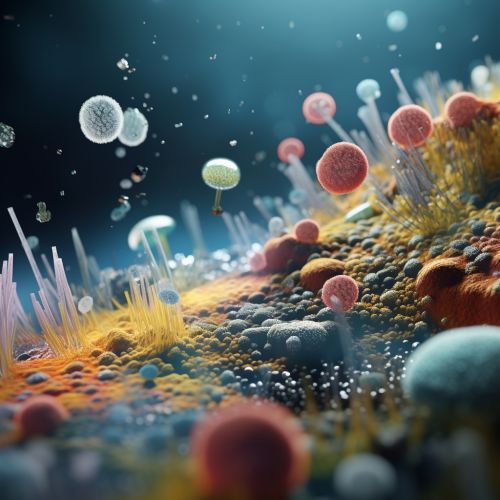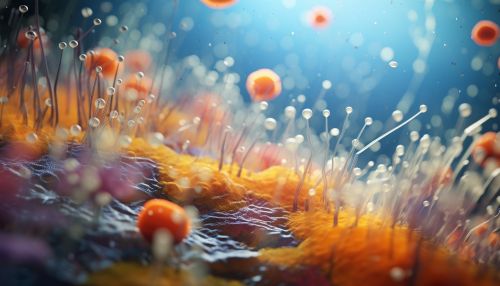Mechanisms of Microbial Biotechnology in Environmental Bioremediation
Introduction
Microbial biotechnology is a branch of biotechnology that applies microbial sciences to create technological advances in applied science and engineering. The discipline of microbial biotechnology combines various scientific disciplines such as bacteriology, virology, mycology, parasitology, computational biology, molecular biology, biochemistry, and biophysics. It is primarily used in the field of environmental bioremediation, a process that uses naturally occurring, beneficial microorganisms to break down harmful substances in the environment.


Mechanisms of Microbial Biotechnology
Microbial biotechnology utilizes the mechanisms of microorganisms to perform specific tasks. These mechanisms include metabolism, genetic manipulation, and biofilm formation.
Metabolism
Microorganisms have a wide range of metabolic capabilities. They can metabolize a variety of substances, including organic and inorganic materials, which makes them ideal for use in environmental bioremediation. Microorganisms can break down pollutants in the environment through metabolic processes such as biodegradation and biosorption.
Genetic Manipulation
Genetic manipulation is another mechanism used in microbial biotechnology. Through genetic engineering, scientists can modify the genetic material of microorganisms to enhance their ability to degrade pollutants. This is done by introducing genes that code for enzymes capable of breaking down specific pollutants.
Biofilm Formation
Biofilm formation is a process where microorganisms adhere to each other on a surface. These biofilms are highly resistant to environmental stresses, which makes them ideal for use in bioremediation processes. Microorganisms in biofilms can degrade pollutants more effectively than free-living cells due to their close proximity to each other.
Applications of Microbial Biotechnology in Environmental Bioremediation
Microbial biotechnology has a wide range of applications in environmental bioremediation. These include the treatment of wastewater, soil remediation, and the cleanup of oil spills.
Wastewater Treatment
In wastewater treatment, microorganisms are used to degrade organic pollutants in wastewater. The process involves the use of aerobic or anaerobic bacteria to break down pollutants in the wastewater. The by-products of this process are carbon dioxide, water, and other harmless substances.
Soil Remediation
Soil remediation involves the use of microorganisms to degrade pollutants in contaminated soil. This process is also known as bioremediation. The microorganisms used in soil remediation are typically bacteria or fungi that can degrade a wide range of pollutants, including hydrocarbons, pesticides, and heavy metals.
Oil Spill Cleanup
Microbial biotechnology is also used in the cleanup of oil spills. Certain types of bacteria, known as hydrocarbonoclastic bacteria, are capable of degrading oil. These bacteria are often used in the cleanup of oil spills to degrade the oil into less harmful substances.
Challenges and Future Directions
Despite the many advantages of microbial biotechnology in environmental bioremediation, there are also several challenges that need to be addressed. These include the potential for the spread of genetically modified organisms, the need for more efficient microorganisms, and the need for more research on the mechanisms of microbial biotechnology.
The future of microbial biotechnology in environmental bioremediation looks promising. With advances in genetic engineering and the discovery of new microorganisms with unique metabolic capabilities, the potential for the use of microbial biotechnology in environmental bioremediation is vast.
